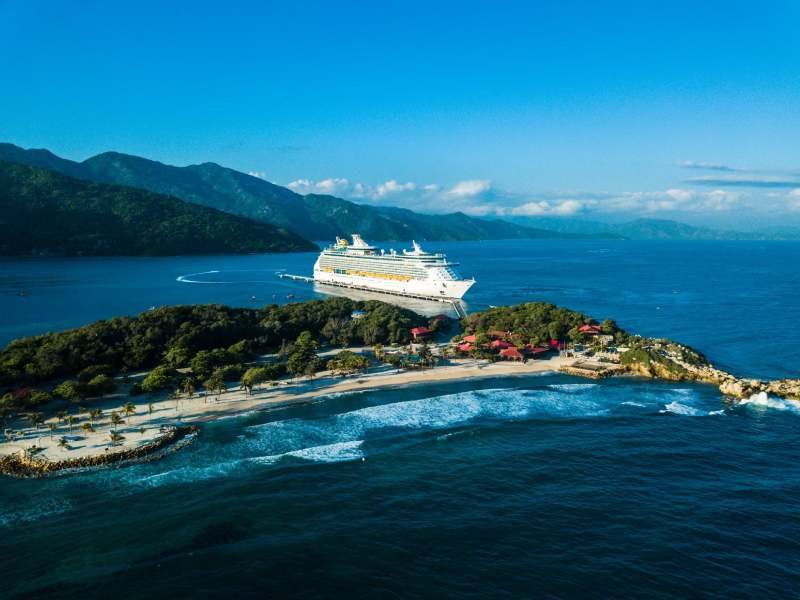Have you ever wondered how much a cruise costs? The cost of a cruise depends on many factors, such as the cruise line, length of your cruise, type of cabin selected, and destinations visited.
Many people don’t realize that the base fare is just the starting cost. You’ll need to factor in additional expenses such as transportation, shore excursions, onboard spending and gratuities. Also, the price of a cruise can fluctuate based on the time of year, with peak seasons often resulting in higher prices.
What Is the Average Cruise Price?
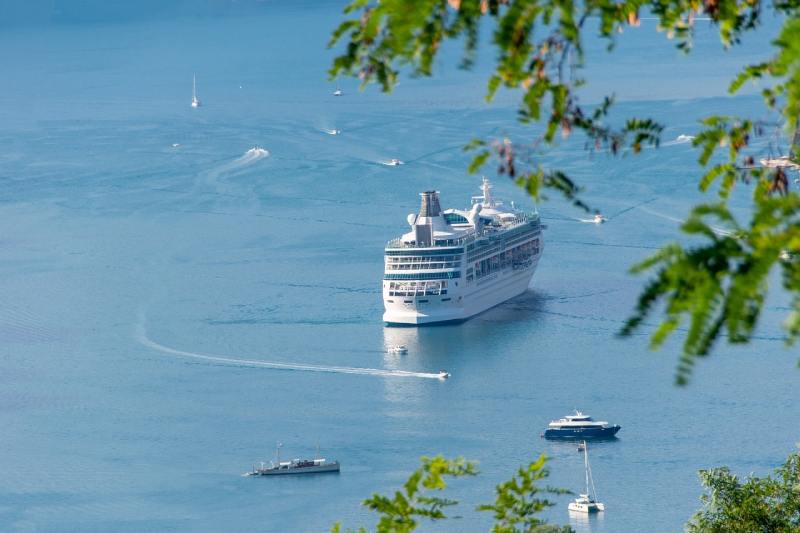
The average price for a seven day cruise is around $1,500 per person. However, when you include money spent onboard on shore excursions, which adds up to an average of about $680, the total cost goes up to about $2,200.
Keep in mind that there are many factors that affect the cruise price, and what you get for your money can be very different. A cruise’s cost depends on things like the type of cruise line, how long the cruise is, what kind of room you pick, where you’re cruising, when you go, and how much you spend while you’re onboard.
Most cruises aren’t all-inclusive, meaning you’ll need to budget for things like onboard spending, tips, shore excursions, gambling, and using the ship’s Wi-Fi. Even though you could pay just for the cruise itself and stick to what’s included, most people end up spending more on extra things.
Luxury cruise lines such as Silversea or Viking Cruises will cost significantly more when compared to more mainstream cruise lines such as Royal Caribbean or Carnival Cruises.
The cabin type you choose also affects the overall cost of your cruise. Interior cabins, which lack windows, are the most budget-friendly option. On the other hand, if you opt for a more luxurious experience, suites or cabins with balconies and ocean views will increase the price.
The length of the cruise and the ports it visits will also affect the fare. Shorter cruises, typically ranging from three to five days, are more affordable and serve as a great introduction to cruising for first-timers. Longer voyages, especially those lasting more than a week and visiting more exotic or remote locations, will be higher in price. Additionally, certain ports (most notably St. Barts) are more expensive as they are known for their luxury offerings and high-end amenities.
Additionally, the time of year plays a crucial role in pricing. Peak travel seasons, such as the summer months, holidays, and the Christmas holidays, often see a surge in prices due to higher demand. If you decide to cruise during the off season, you can potentially save hundreds of dollars.
Pricing Varies Across Cruise Lines
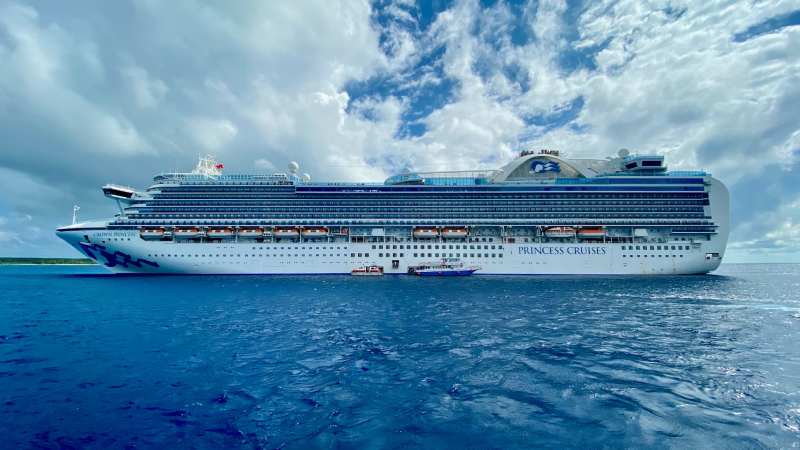
Mainstream, premium, and luxury cruise lines
Cruise lines can be categorized into three main types: mainstream, premium, and luxury. Each category offers a different level of service, amenities, and, consequently, pricing.
Mainstream cruise lines (such as Royal Caribbean, Carnival Cruises, P&O, Holland America Line, and MSC) are the most affordable and cater to a broad audience. Cruises in this category generally range in price from $50 to $500 per night.
Premium cruise lines (such as Princess Cruises, Cunard Line, Virgin Voyages, and Celebrity Cruises) provide a more refined experience with additional focus on dining, service, and stateroom quality, leading to higher prices. Cruises in this category generally range in price from $300 to $800 per night.
Luxury cruise lines (such as Silversea, Viking Cruises, Oceania Cruises, and Regent Seven Seas Cruises), at the top end of the spectrum, offer an all-inclusive experience with personalized service and exclusive amenities, resulting in the highest prices. Cruises in this category generally range in price from $550 to $1,200 per night.
The age of a cruise ship influences the price
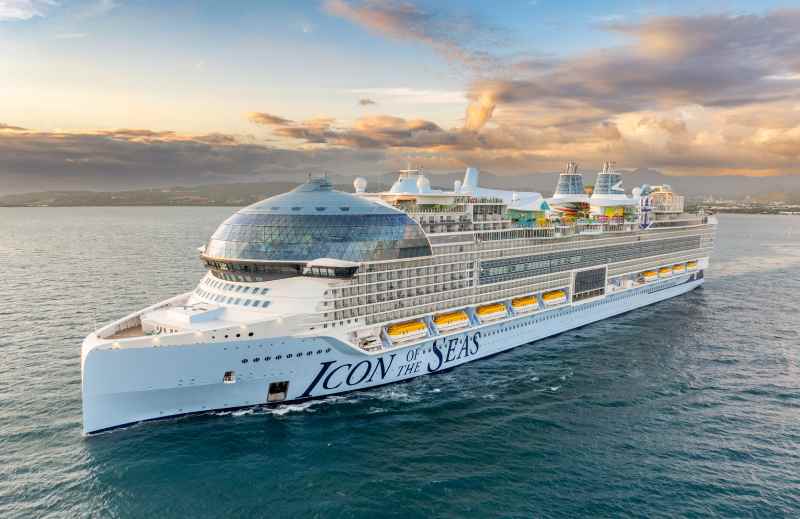
(used with permission from Royal Caribbean Press Center)
The age of the ship is another factor that influences the cost of a cruise. Newer ships, with the latest amenities and technologies, tend to have higher fares. For example, a 7-night Western Caribbean cruise on Royal Caribbean’s upcoming Star of the Seas starts at around $1,800. In contrast, opting for the same itinerary on one of their older ships could significantly reduce the cost, with prices starting at around $879.
What’s included in the cruise fare?
Another aspect that varies significantly between cruise lines is what’s included in the cruise fare. Mainstream cruise lines often offer lower base fares but charge extra for amenities such as drinks, Wi-Fi, and shore excursions. On the other hand, luxury cruise lines tend to operate on an all-inclusive basis, covering everything from specialty dining and premium drinks to shore excursions and gratuities in the fare, providing a more worry-free vacation experience but at a higher initial cost.
Some cruise lines, like Celebrity Cruises, offer an “All Included” rate. This package includes a Classic Drinks Package, basic Wi-Fi, and prepaid gratuities on top of everything covered by the standard fare. Opting for this rate might appear more expensive upfront, but Celebrity Cruises advertises savings of up to 45% compared to purchasing these add-ons separately.
Cabin Type Affects The Cost
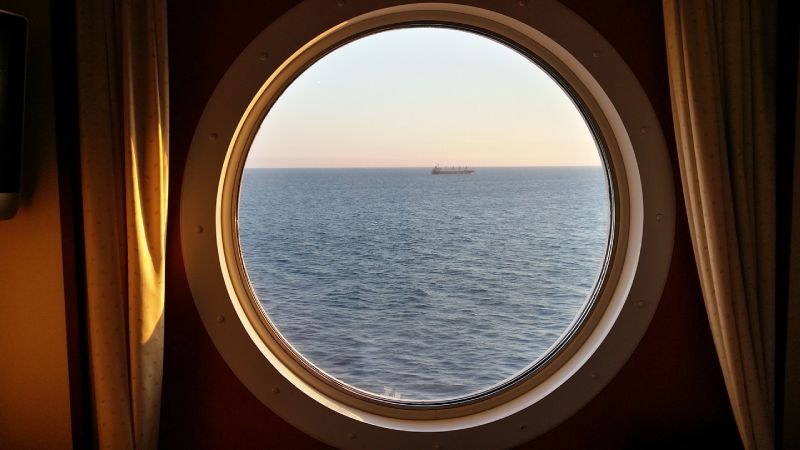
One of the primary factors affecting the cost of a cruise is the type of cabin you choose to stay in. Cabins on cruise ships come in various types, including interior cabins (with no windows), oceanview cabins (with a window or porthole), balcony cabins (with a private balcony), and suites (larger accommodations with additional amenities). As you might expect, the more luxurious the cabin, the higher the cost. Inside cabins are typically the most affordable, while suites are the most expensive.
The location of the cabin on the ship can also affect the price. Cabins located on higher decks or in more desirable locations, such as the mid-ship, can be pricier. When selecting a cabin, consider what aspects of the cruise experience are most important to you and how much you’re willing to spend for comfort, views, and amenities.
The single supplement fee is an important consideration for solo travelers. This fee is charged because cruise prices are often based on double occupancy. When a cabin is occupied by only one person, the cruise line loses potential revenue from the second passenger. To compensate, they charge a single supplement fee, which can sometimes be as high as 80% to 100% of the fare. This means that a solo traveler could end up paying the equivalent of the fare for two people to have a cabin to themselves.
Factor in Transportation to Overall Cost

When planning a cruise, the transportation to the cruise port is a significant factor to consider in the overall cost. If the cruise port is within driving distance, you might save a considerable amount of money that would otherwise be spent on airfare and other travel-related expenses. Driving to the port can be a cost-effective option, but it’s important to account for the expenses of gas and parking at the port, which can add up.
For those who need to fly to the cruise port, the cost of flights can vary widely. In the United States, for instance, a flight to Miami—a popular cruise port—can range from $200 to $500. If you’re outside the United States, the price will be much higher. Once you arrive at the airport, you’ll also need to consider the cost of transferring to the cruise port. Options like a shuttle, taxi, or rideshare services such as Uber have different costs, with a shuttle from Miami airport to the cruise port costing around $17, a taxi approximately $30, and an Uber about $20.
It’s generally advised to arrive at the cruise port city at least a day before the cruise begins, so accommodation will be another factor to consider. Spending a night at a mid-tier motel in Miami, for example, will cost around $150. This, combined with the transportation costs, means that you should expect to spend approximately $500 to $800 for transportation and hotel costs before you even set foot on the cruise ship.
Onboard Expenses Can Add to the Cost
Cruises offer a variety of activities to keep you occupied, but most aren’t all-inclusive unless you choose a luxury line. This means there will be additional onboard expenses that can accumulate, depending on the amenities or services you choose to enjoy. Some cruise lines are known for having more onboard expenses than others, so it’s wise to do some research before booking.
Drink packages
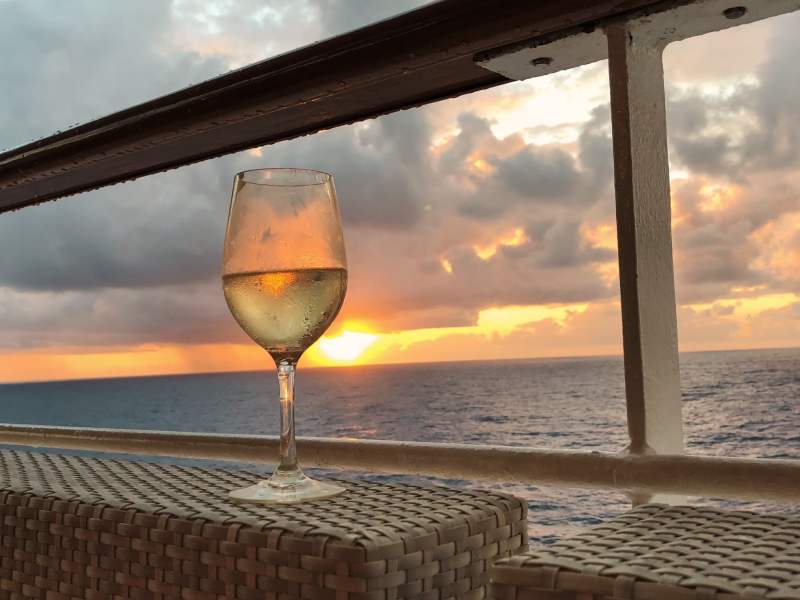
One of the common additional costs comes from drink packages. These packages can significantly increase the overall price of your cruise. For example, some cruise lines offer soda packages, while others provide premium packages that include alcohol.
In general, premium drink packages will cost around $50-75/day, with a limit of around 15 drinks per day. Soda packages are cheaper, at around $10/day. To save money, you can bring your own drinks on the cruise, but remember, some cruise lines, like NCL, either don’t allow this or have restrictions. Also, drink packages are paid for by each person. So, if you’re sharing a room with another adult (specifically on Royal Caribbean) each adult must buy their own drink package.
Internet packages

In today’s connected world, many want to stay online even while at sea. However, internet packages on cruise ships can add to your expenses. For example, Royal Caribbean’s VOOM package can cost around $20 per day, while Carnival offers a Wi-Fi package starting at $13 per day, with a premium option for around $21. Prices can fluctuate based on the number of users, devices connected, and data usage. Additionally, be prepared for slower internet speeds compared to what you’re used to at home.
Specialty restaurants
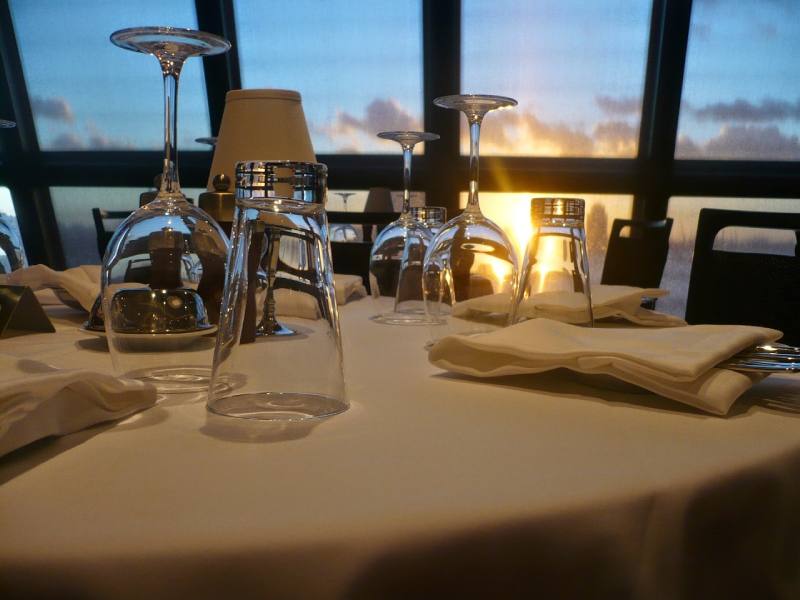
Cruise ships often feature a variety of dining options, including specialty dining that offers a more exclusive experience compared to the main dining areas. These specialty dining venues typically come with an additional charge.
If you’re cruising with Royal Caribbean, you’ll have access to a variety of dining experiences beyond the main dining hall. For an additional fee, you can indulge in specialty restaurants (depending on the ship) that offer a more exclusive and upscale dining atmosphere. Examples include “Chops Grille,” known for its premium steaks and seafood; “Giovanni’s Table,” offering a taste of Italy with its authentic Italian dishes; and “Izumi,” where you can enjoy fresh sushi and other Japanese cuisine.
Gratuities
Gratuities are another onboard expense that can add to the cost of your cruise. Most cruise lines automatically add gratuities to your onboard account to cover service from the staff, though some lines do not. The cost of gratuities can range from $14 to $20 per person, per day, depending on the cruise line and room you’re in.
Spa and salon services
For those looking to relax and indulge, onboard spa and salon services offer a range of treatments such as massages, facials, and hair services. However, these services are usually not included in the cruise fare and can range from $50 to $200 or more, depending on the treatment.
Casino gambling

If you’re feeling lucky, the cruise ship’s casino offers a variety of games to try your luck. Any money spent in the casino is an additional expense and can vary greatly based on how much you choose to gamble. You’re more likely to find casinos onboard American cruise lines, as gambling culture is more prevalent in the United States compared to most countries.
Some cruise lines also reward frequent casino gamblers with rewards known as ‘comps’. Royal Caribbean’s comp system rewards players for gambling in the onboard casino through a points-based loyalty program. Players use their Sea Pass card to track their gambling activity, earning points for playing slots, video poker, and table games. The more points you have, the higher your level in the Club Royale program. As you progress, you can get better rewards, such as free cruises.
Photography services
Professional photographers on cruise ships capture memorable moments that passengers can purchase. Whether you opt for individual prints or package deals, expect to spend anywhere from $10 to $30 or more for these professional photos.
Onboard activities and entertainment
While many activities and entertainment options are included in your cruise fare, some premium experiences come with an additional charge. This could include wine tastings, culinary classes, special attractions like Royal Caribbean’s FlowRider, or exclusive behind-the-scenes tours. These experiences usually range from $20 to $100 per person.
Factor in Shore Excursion Costs
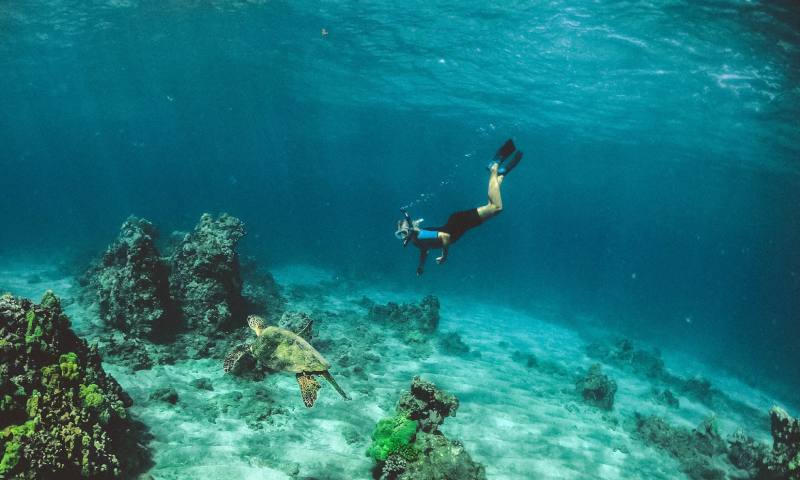
When planning a cruise, it’s important to consider the costs of shore excursions, as they can add a significant amount to your overall cost. While staying on the ship is always an option, there’s usually less onboard activities when the ship is in port.
Before you dock at each destination, it’s a good idea to do some research. Find out what attractions and activities are available. Are you thinking of taking a taxi to a local beach, eating at a nearby restaurant, or buying a souvenir to remember your trip? Knowing what’s out there and the average cost of these excursions can help you budget better.
Usually, shore excursions offered directly from the cruise line are more expensive, though you’re guaranteed to get back on the ship and they’re usually more reliable.
Time of Booking Affects The Cost
Booking early can save money

Booking your cruise far in advance can often secure you the best fares. As a general rule, booking your cruise 50 to 90 days before it starts gives you the best deal. This is because cruise lines aim to fill up their cabins well ahead of the departure date and offer attractive prices to early bookers. If you book your cruise early, you can take advantage of these deals, which not only save you money but also give you a wider selection of cabin types and locations on the ship.
Booking last-minute can save money
If you’re flexible with your travel plans, you could save money by booking your cruise at the last minute. As the departure date approaches, cruise lines looking to fill up the remaining cabins may offer discounts. However, keep in mind that while last-minute deals can be cost-effective, they often come with limitations, such as a reduced choice of cabin types. You might also find yourself in a less desirable location on the ship.
Cruise ship ticket prices increase over time

It’s important to understand that, generally, cruise ship ticket prices tend to increase as the departure date gets closer. This is due to the simple principle of supply and demand; as more people book their trips and the inventory of available cabins decreases, prices go up. This means that waiting too long in hopes of a price drop could result in higher costs or missing out on the cruise altogether if the ship reaches capacity. Booking early or at the last minute can help avoid these price hikes.
Season Affects The Cost
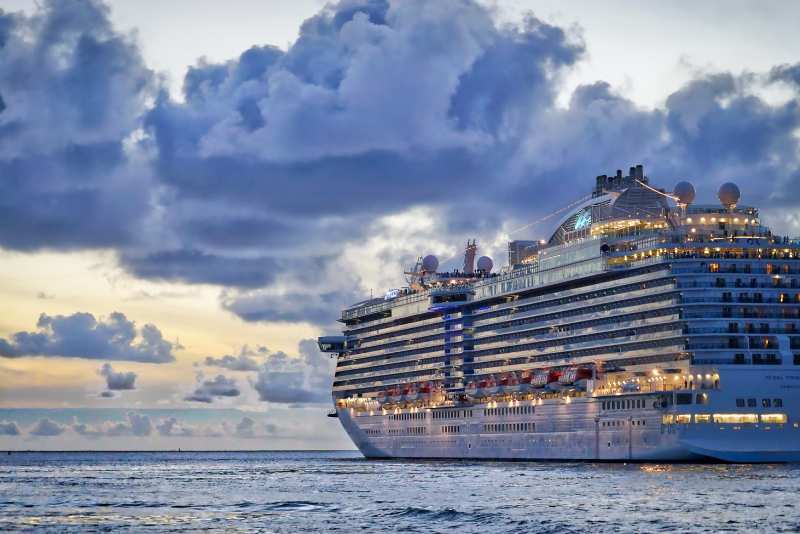
When planning a cruise, keep in mind that the time of year can impact the cost of your trip. Certain times of the year offer lower prices due to decreased demand, while others see a surge in costs associated with peak vacation times.
If you’re cruising to the Caribbean, one period when you might find lower prices is during hurricane season. This season typically spans from June to November and is considered less ideal for cruising due to the potential for bad weather. Another opportunity for savings is during the shoulder season. The shoulder season occurs between the peak and off season, when demand is lower.
Prices for cruises are generally higher during popular vacation times, such as the summer months and around Christmas. During these periods, demand for cruises increases as these are common times for families and individuals to take vacations. The warm summer weather and the festive holiday season create an ideal environment for cruising, leading to higher occupancy rates on ships. As a result, a cruise will usually cost more due to the increased demand.
Keep in Mind Special Offers and Discounts
Discounts for kids

Families can benefit from cruise lines that offer discounts for children. In some cases, kids may even cruise for free. For example, MSC Cruises often provides deals where children under 12 can cruise for free when sharing a cabin with two paying adults. Similarly, Norwegian Cruise Line occasionally runs promotions that allow kids to sail free as part of their “Free at Sea” offers, making family vacations more affordable. These promotions can vary by sailing and availability, so make sure to check with the cruise line or a travel agent for the latest offers.
Loyalty programs offer frequent discounts
Programs like Royal Caribbean’s Crown & Anchor Society and Carnival’s VIFP (Very Important Fun Person) Club reward frequent cruisers with a variety of benefits. Joining a cruise line’s loyalty program is a smart move for frequent cruisers. Members can earn discounts, onboard credits, and other perks as they advance through tiers, helping you save lots of money.
Special discounts for military, seniors, and police officers
Many cruise lines extend special discounts to military personnel, seniors, teachers, first responders, and others. It’s always worth inquiring about these discounts when booking your cruise, as they can lead to significant savings.
Royal Caribbean provides discounted rates for seniors (aged 55 and over), police officers, firefighters, and military members on select voyages. Similarly, Carnival extends discounts to seniors (aged 55 and over) and military personnel. Additionally, Princess Cruises offers special pricing for teachers, military members, and first responders/medical staff.
Repositioning cruises
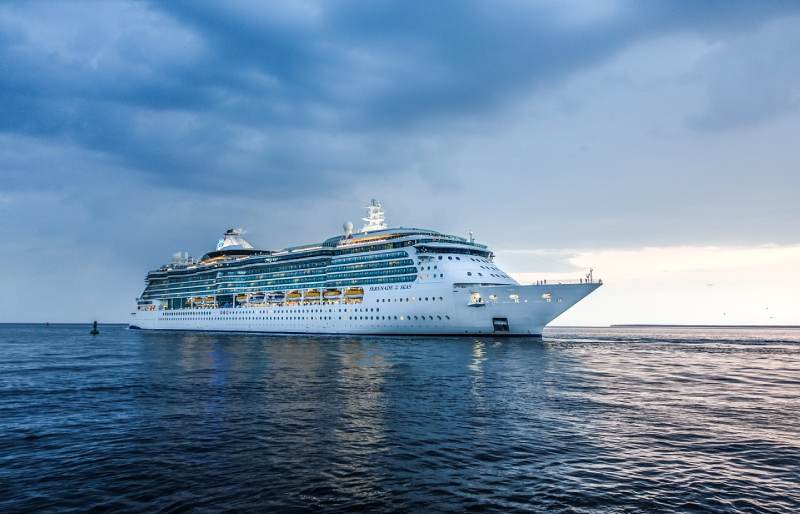
Repositioning cruises are one-way voyages offered by cruise lines when they need to relocate their ships to another region. This usually happens in the spring and fall. For example, a ship might move from the warm Caribbean to Europe for the summer. These trips are cheaper than normal cruises, making them a good deal for people who want to save money.
One great thing about these cruises is that they stop at places that normal cruises don’t. So, passengers get to see new and different ports that aren’t on the usual cruise itineraries. Additionally, there’s more time to enjoy the ship’s fun activities as these trips can be longer, often lasting more than two weeks.
Keep in mind that because these cruises end in a different place from where they started, you’ll have to think about booking a one-way flight back home. This can increase the overall cost of your cruise vacation.
Example Itineraries and Their Costs
If you’re considering a cruise, here are some example itineraries and their starting prices to help you get an idea of what to expect in terms of cost:
For a 7-night cruise to the Western Caribbean with Royal Caribbean, prices begin at $979 for an interior room per person. If you prefer a room with a view or your own balcony, prices increase to $1,439 and $1,329, respectively, and a luxury suite can cost up to $5,315.
For a shorter, 4-night cruise to the Bahamas, also with Royal Caribbean, the starting price is much lower, at $406 for an interior room, and goes up to $1,229 for a royal suite.
For those interested in a longer adventure, a 13-night Royal Caribbean cruise to Alaska, including land tours, starts at $3,449 for an inside room, reaching up to $5,549 for a royal suite.
Alternatively, a 12-night Mediterranean cruise from Barcelona to Rome on Regent Seven Seas Cruises starts at a higher price point of $12,499 per person.
A 6-day trip to the Western Caribbean and Mexico with Princess Cruises begins at $1,424 per person.
Tips for Saving Money on a Cruise
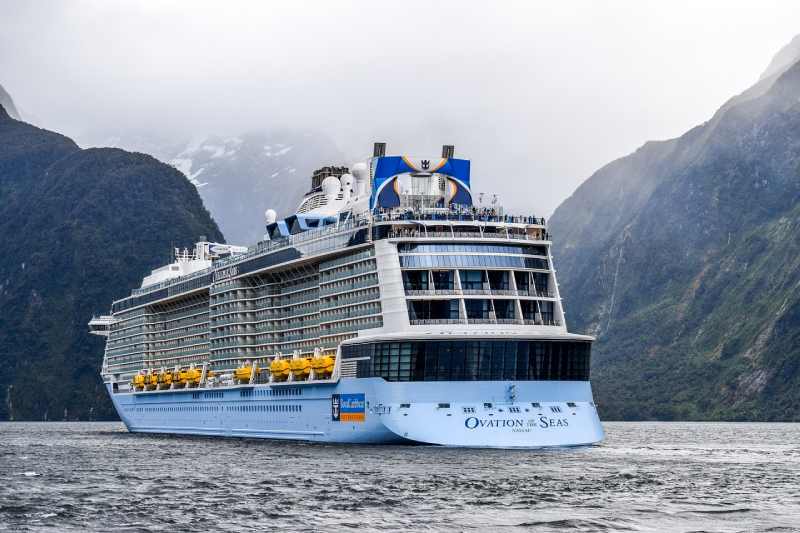
Keep your eyes out for discounts and special offers
One great way to save money on a cruise is by actively looking for discounts and special offers. Cruise lines often have promotions that can significantly reduce the cost of your trip. These promotions may include last-minute deals, off-season discounts, or packages that bundle cruise elements (like meals, excursions, or onboard credits) at a lower price than if purchased separately.
When planning a cruise, one of the easiest ways to save money is by setting alerts for price drops on cruise fares. Prices for cruises can fluctuate based on demand, time of year, and promotions, so catching a lower price can significantly reduce the overall cost of your trip. To take advantage of these fluctuations, use apps and websites (such as CruisePlum) that monitor cruise prices and send notifications when there’s a drop in the price of the cruise you’re interested in.
Limit the amount of onboard spending
Saving money on a cruise doesn’t stop with booking your trip. A large part of your budget can be affected by your onboard spending. Here are a couple of tips to limit onboard spending:
Pre-purchase packages: Before you set sail, many cruise lines offer the option to pre-purchase beverage, dining, and internet packages at a discounted rate compared to buying them onboard.
For example, Royal Caribbean’s beverage packages are a great way to save on drinks. They offer three options: the Soda Package, the Refreshment Package, and the Deluxe Beverage Package, which covers alcoholic beverages. You can also purchase Royal Caribbbean’s photo package instead of buying them individually on board.

Set a daily budget: It’s easy to get carried away with the convenience and excitement of everything a cruise has to offer. To avoid this, set a daily budget for yourself and stick to it.
Many cruise ships offer apps or onboard kiosks where you can track your spending in real-time. Make use of these tools to keep an eye on your expenses. If you’re traveling with family, discuss the budget with everyone involved to ensure all are on the same page.
Use a travel agent

Using a travel agent can be a smart move when looking to save money on your cruise. This is because travel agents often have access to exclusive deals, promotions, and insider pricing that aren’t available to the general public. They also have established relationships with cruise lines and are usually the first to know about discounts, limited-time offers, and even upgrades that can save you money.
A knowledgeable travel agent can provide value that goes beyond just financial savings. They can help you choose the best cruise line, ship, and itinerary based on your preferences and budget, so you get the most bang for your buck. They can also help navigate the complex world of cabin selection, dining options, and shore excursions, helping you avoid costly mistakes or unnecessary expenses.
Choose the right time to cruise
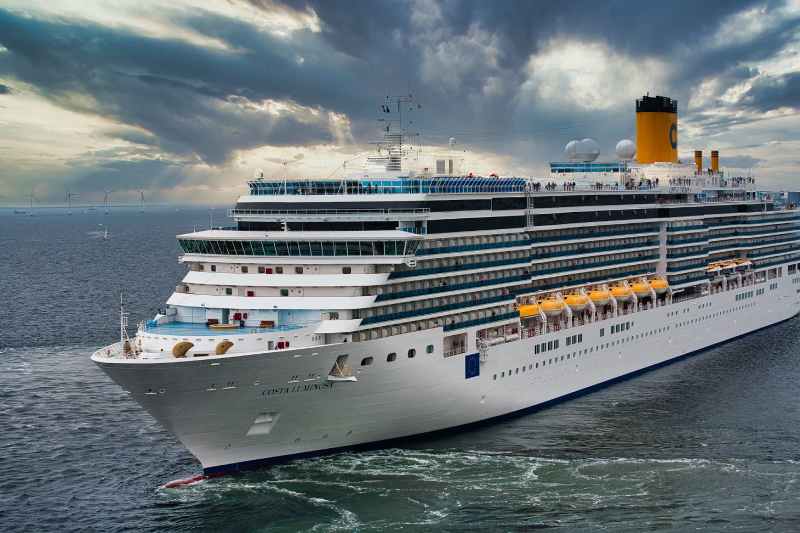
Choosing the right time to embark on a cruise can significantly impact your savings. For many popular destinations, cruising during the off-peak seasons can lead to significantly lower prices. This is because demand for cruises decreases when most people are unable to travel, such as during the school year or at times when the weather is not ideal for cruising (such as the hurricane season). As a result, cruise lines often lower their prices to attract more passengers during these times.
Additionally, considering a cruise during the shoulder seasons—the periods just before or after the peak travel times—can also lead to substantial savings. These times typically have milder weather and fewer crowds, and often come with a lower price tag. For example, early fall or late spring can be ideal times to cruise in many destinations, as you avoid the summer rush when families are more likely to travel because of school vacations.
Set a budget
Setting a budget for your cruise can help you avoid unexpected expenses and ensure a more enjoyable vacation experience. To budget effectively, consider all potential costs, including pre-cruise expenses (airfare, hotels), the cruise fare (inclusive of taxes and fees), onboard spending, shore excursions, and extra costs such as travel insurance. Here is a guide you could use:
Pre-cruise expenses: 10-15% of your total budget, covering airfare, hotels, and any pre-cruise activities. This makes sure you have enough to enjoy the destinations you’re embarking from without starting your cruise stressed about finances.
Cruise fare: 50-60% of your total budget, as this is the core of your cruise experience. This portion covers your accommodation, most meals onboard, and many forms of entertainment and activities that are included with your cruise fare.
Extra spending: 10-15% for things like specialty dining, spa services, internet packages, and onboard shopping. While many activities are included in the base fare, most people will generally spend some of their money on packages or things onboard.
Shore excursions: 10-20% of your budget should be dedicated to exploring your destinations through tours or experiences. Prices vary widely based on the activity, so consider booking some through the cruise line and exploring other ports on your own to save money.
Extra costs: 5-10% travel insurance, hotel stays, transportation back home, and any unforeseen expenses. This makes sure you have money left for any unexpected costs and can enjoy the end of your trip without financial worries.
Booking an interior cabin can save you money
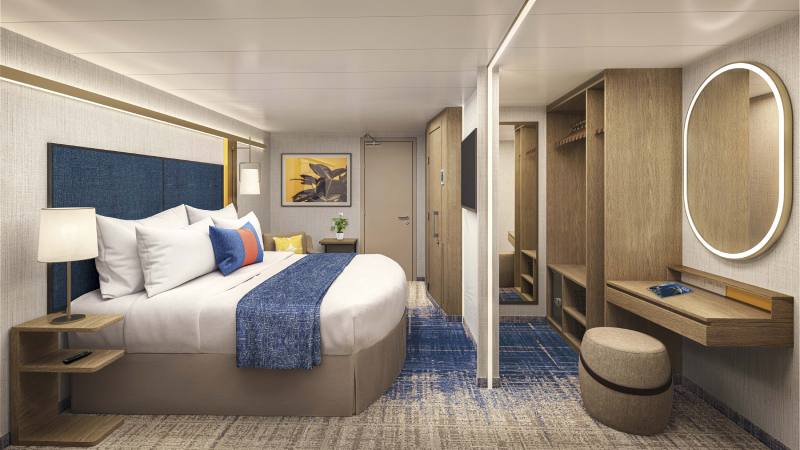
(used with permission from Royal Caribbean Press Center)
Booking an interior cabin is an easy way to save money on a cruise. These cabins, located in the ship’s interior corridors without a view of the ocean, are typically the most affordable options available. While you might miss out on waking up to sea views, you will save a lot of money that can be used for other parts of your trip.
Take the example of Royal Caribbean’s 7-night Bahamas & Perfect Day Cruise: an interior cabin costs $589, whereas an ocean view is $719, a balcony is $999, and a suite skyrockets to $2,009. Opting for an interior cabin can save you over $400 compared to a balcony, freeing up a large amount of your budget for other vacation pleasures.
Thinking about booking a balcony cabin? Here’s why it might not be the best investment.
Compare different cruise lines: from mainstream to luxury
There are three general cruise line tiers: mainstream, premium, and luxury. If you’re looking to save money, consider going on a mainstream cruise line such as Carnival or Royal Caribbean. These cruises offer plenty of amenities and activities at a more affordable price point, making them great for families and budget-conscious travelers.
On the other hand, premium and luxury cruises, like Princess Cruises and Regent Seven Seas, offer more personalized services, finer dining options, and more spacious accommodations, but at a higher cost. Your choice depends on what you value most in your vacation—whether it’s saving money or indulging in a more luxurious experience.
How Much Does a Cruise Cost? – FAQ
What is the average cost of a 7 day cruise?
According to the Cruise Lines International Association (CLIA), the average cost of a 7 day cruise is around $1,700. Keep in mind that this is only the base fare, so the cost will increase depending on onboard expenses, transportation, excursions, gratuities, and any additional services or amenities you choose to enjoy during your cruise.
What is the cheapest time to cruise the Caribbean?
The hurricane season—lasting from June to November—is generally the cheapest time to cruise the Caribbean. During this period, the Atlantic hurricane season makes it less desirable for most travelers, leading cruise lines to offer significant discounts. If you’re looking for a budget-friendly cruise and are prepared for bad weather and itinerary changes, the hurricane season can be a great time to cruise. Although it’s recommended to avoid the season’s peak from August to October, unless you’re cruising the southern Caribbean.
Should I include laundry in my cruise budget?

Yes, including laundry expenses in your cruise budget is a good idea. While some luxury cruise lines might offer complimentary laundry services, most mainstream and even premium cruise lines charge for laundry services. The costs can vary depending on the cruise line and the type of service (e.g., per item, per bag, or self-service laundry facilities).
Self-service laundromats are typically more economical, costing a few dollars per wash and dry cycle, whereas full-service laundry can be more expensive, with charges per item that add up quickly. Some cruise lines also offer laundry packages or specials during the cruise, which can be a more cost-effective option if you anticipate needing multiple laundry services.
If laundry costs are a concern, consider packing a few extra clothes to reduce the need for laundry services, or pack lightweight, easy-to-wash items that can be hand-washed in your stateroom if necessary. However, for convenience and to enjoy your cruise without worrying about laundry, allocating part of your budget to cover these services is a good idea.
How expensive are cruises for solo travelers?
The cost of cruises for single travelers can vary widely but tends to be higher due to the “single supplement” fee, which compensates for occupancy rates designed around two people. However, some cruise lines offer studio rooms specifically designed for solo travelers, which can significantly reduce costs by either lowering or eliminating the single supplement fee.
Do kids save money on cruises?
Yes, kids can save money on cruises in several ways. Many cruise lines offer special discounts for children, especially when they share a cabin with two paying adults. Sometimes, kids might even cruise for free or at a significantly reduced rate, depending on the cruise line’s promotions and policies. Additionally, cruise ships often have kids’ clubs and activities included in the fare, which means parents won’t have to spend extra on entertainment for their children.
How much money does the average person spend on a cruise ship?
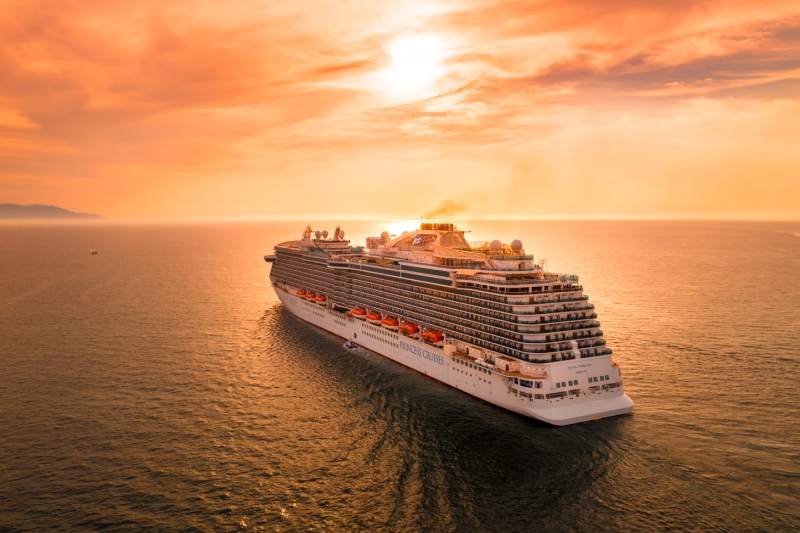
The amount of money the average person spends on a cruise ship depends on their individual spending habits, the length of the cruise, and what is included in the cruise fare. Generally, passengers might spend additional money on board for specialty dining, alcoholic beverages, excursions, spa treatments, gratuities, and onboard activities that aren’t included in the base fare.
A rough estimate for additional onboard spending can range from $50 to $200 per person, per day, depending on the level of luxury of the cruise line and the spending choices of the traveler. Budget-conscious travelers might spend on the lower end by taking advantage of free activities, dining in included restaurants, and limiting purchases, while those looking to indulge in more luxuries on board might find themselves spending at the higher end of that range or even more.
Keep in mind, many cruise lines offer packages that can be purchased in advance for beverages, internet, and even excursions, which can help you save money compared to paying for each item individually onboard.
Related articles:

